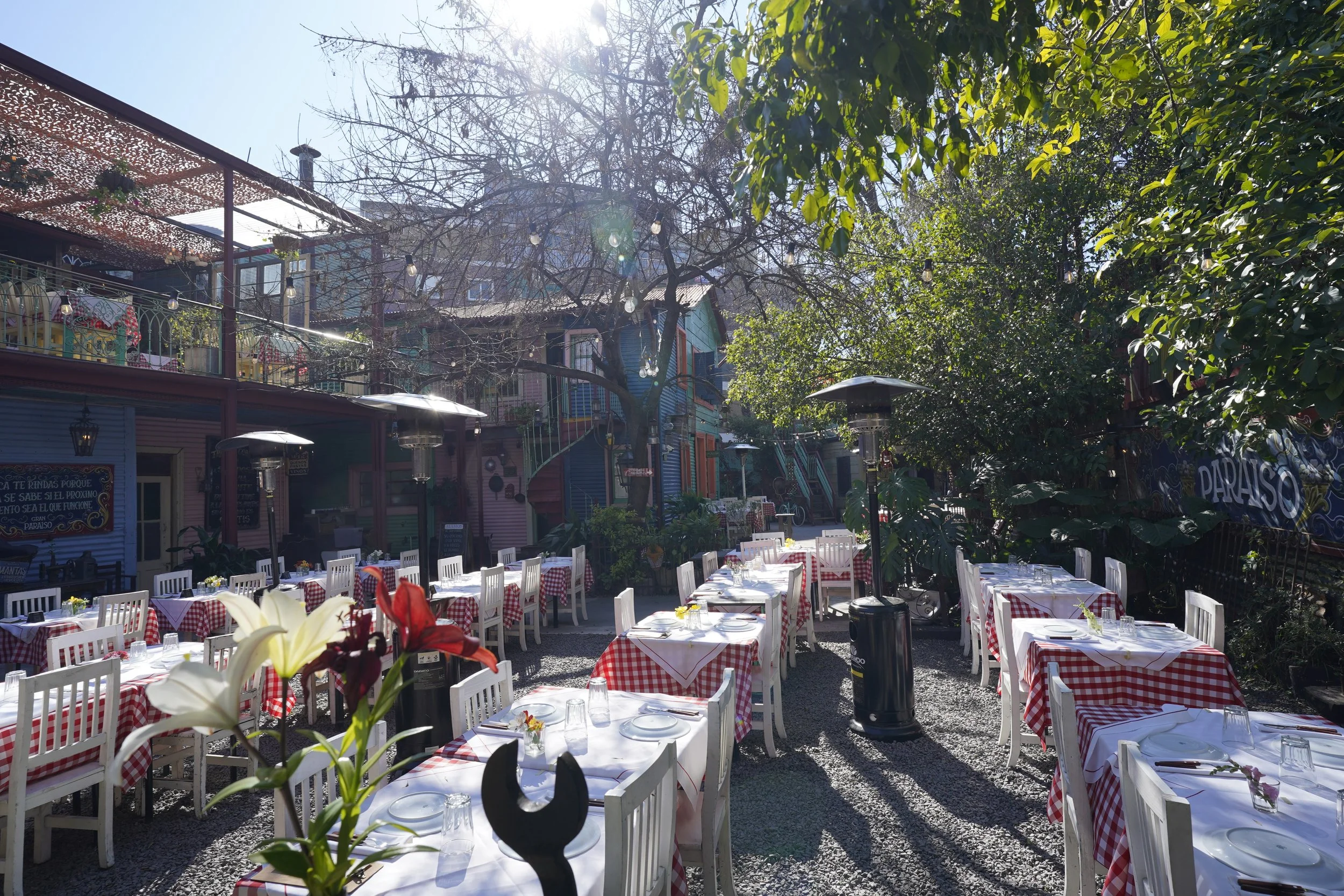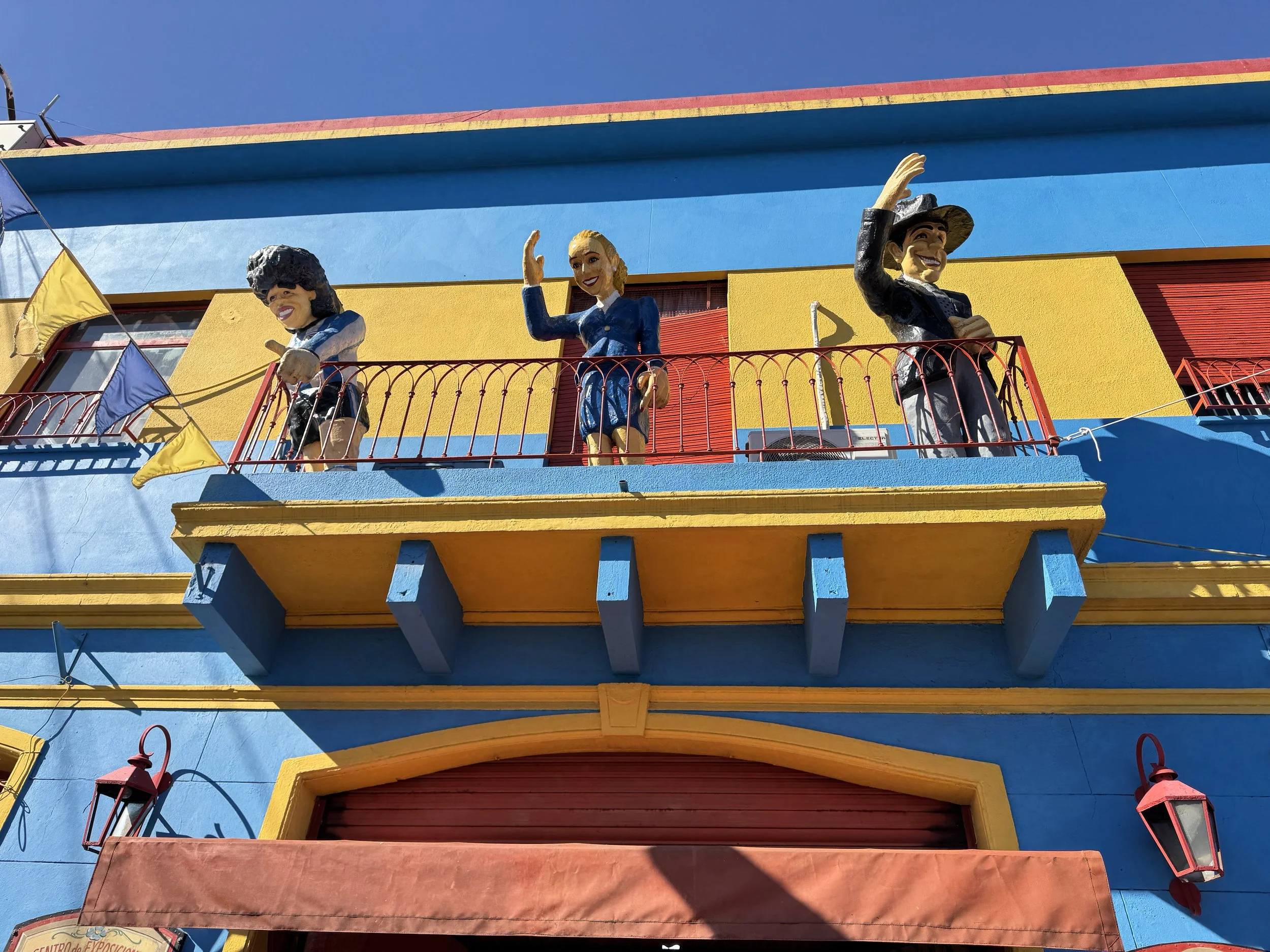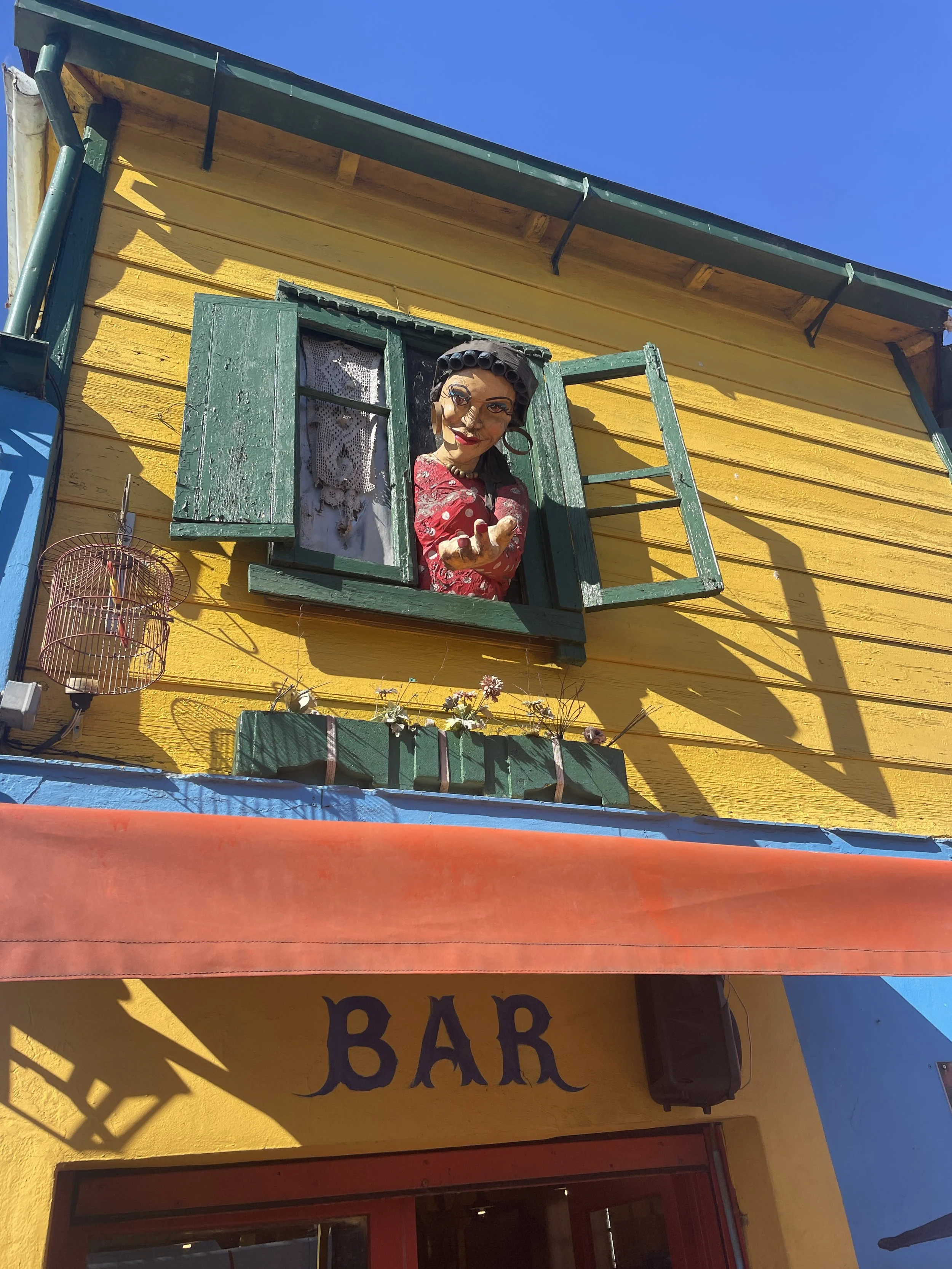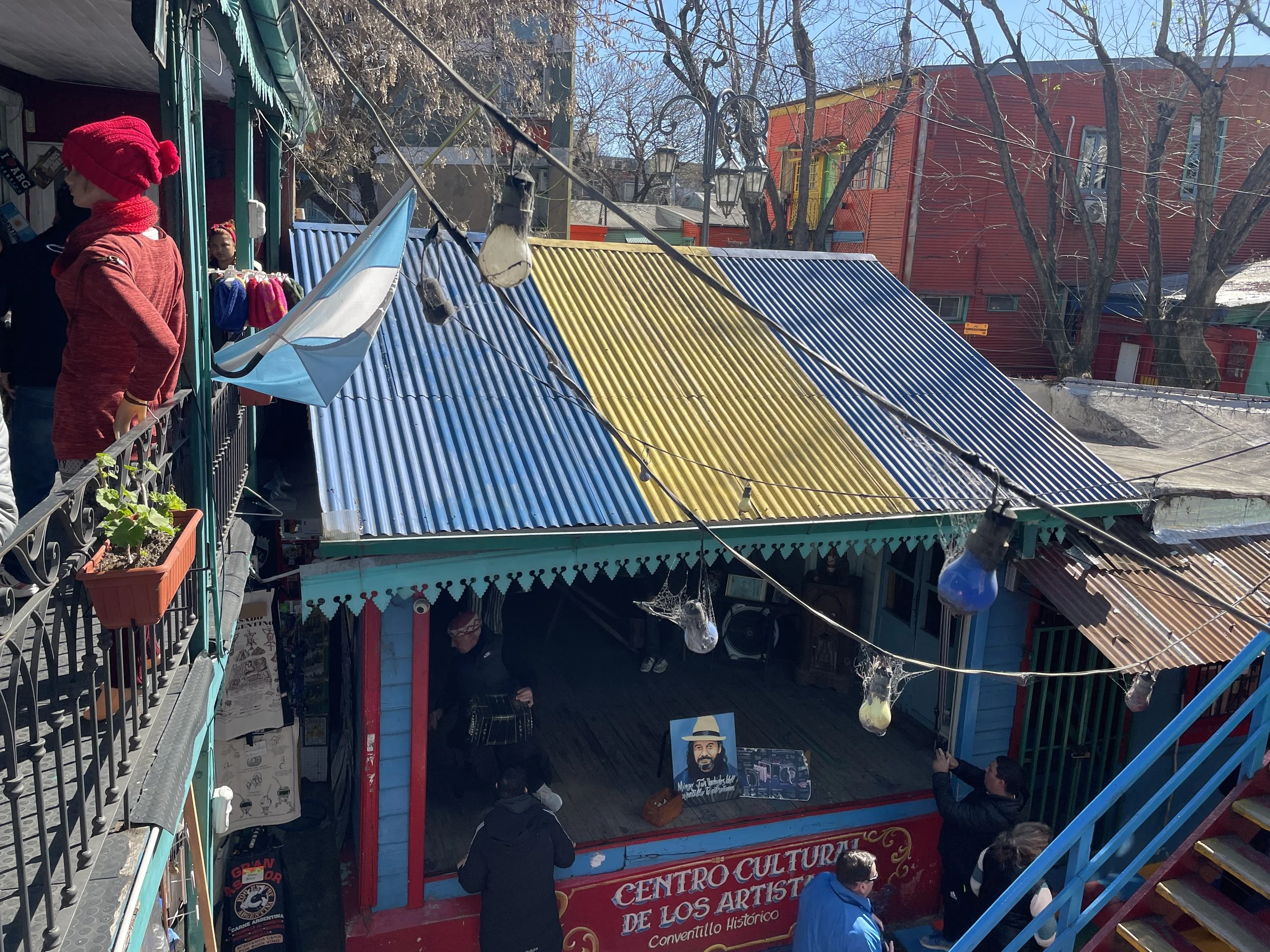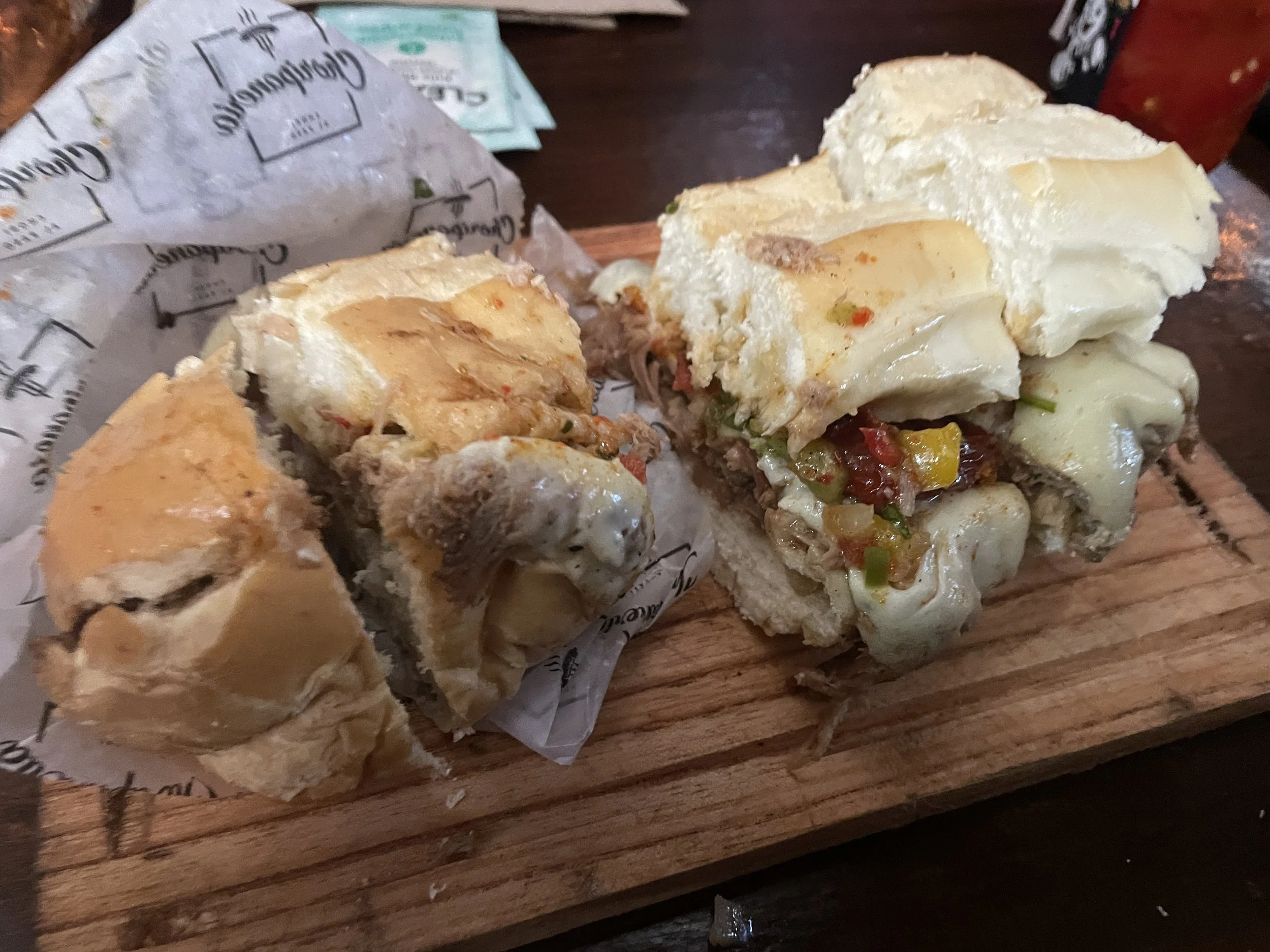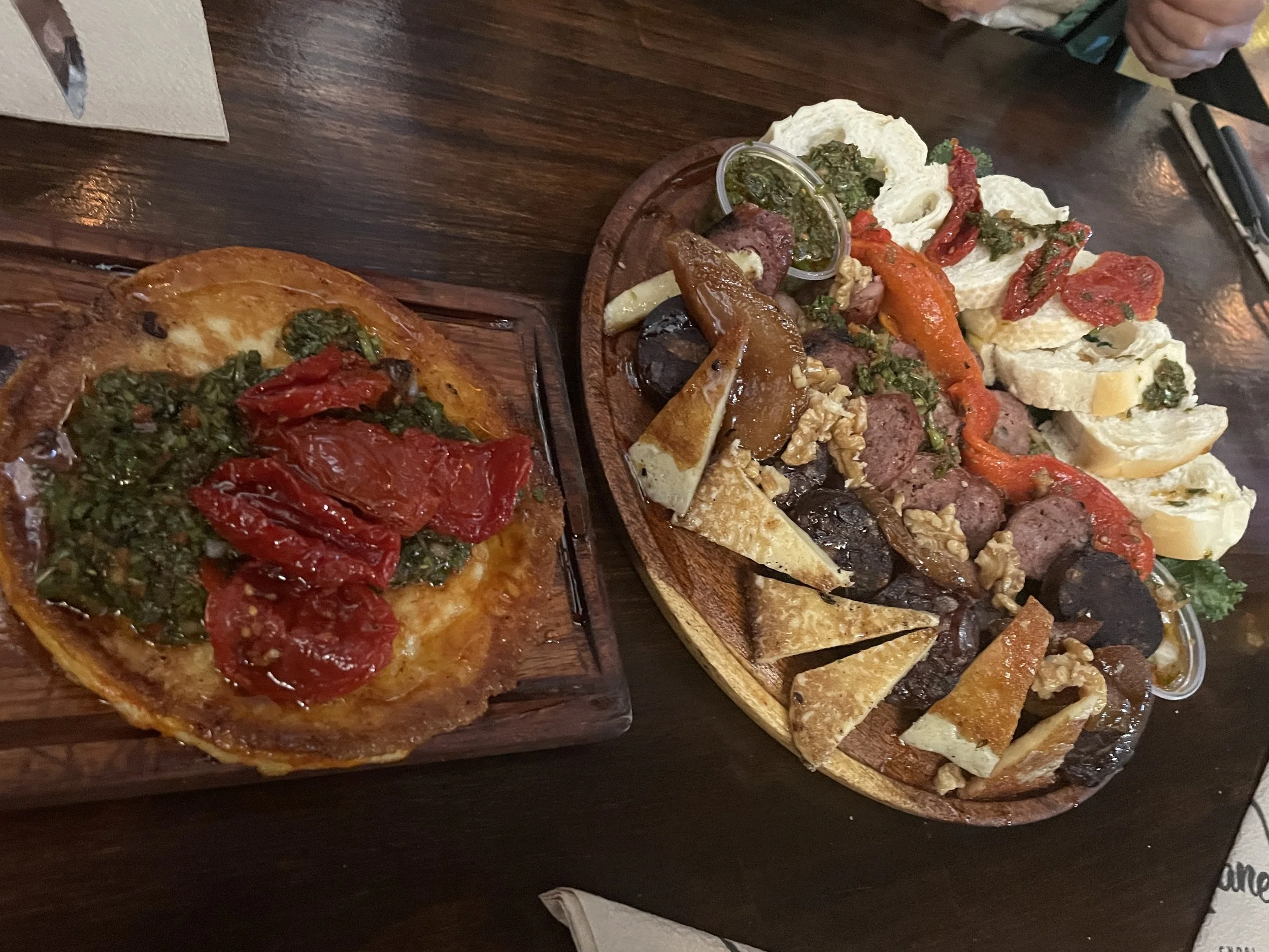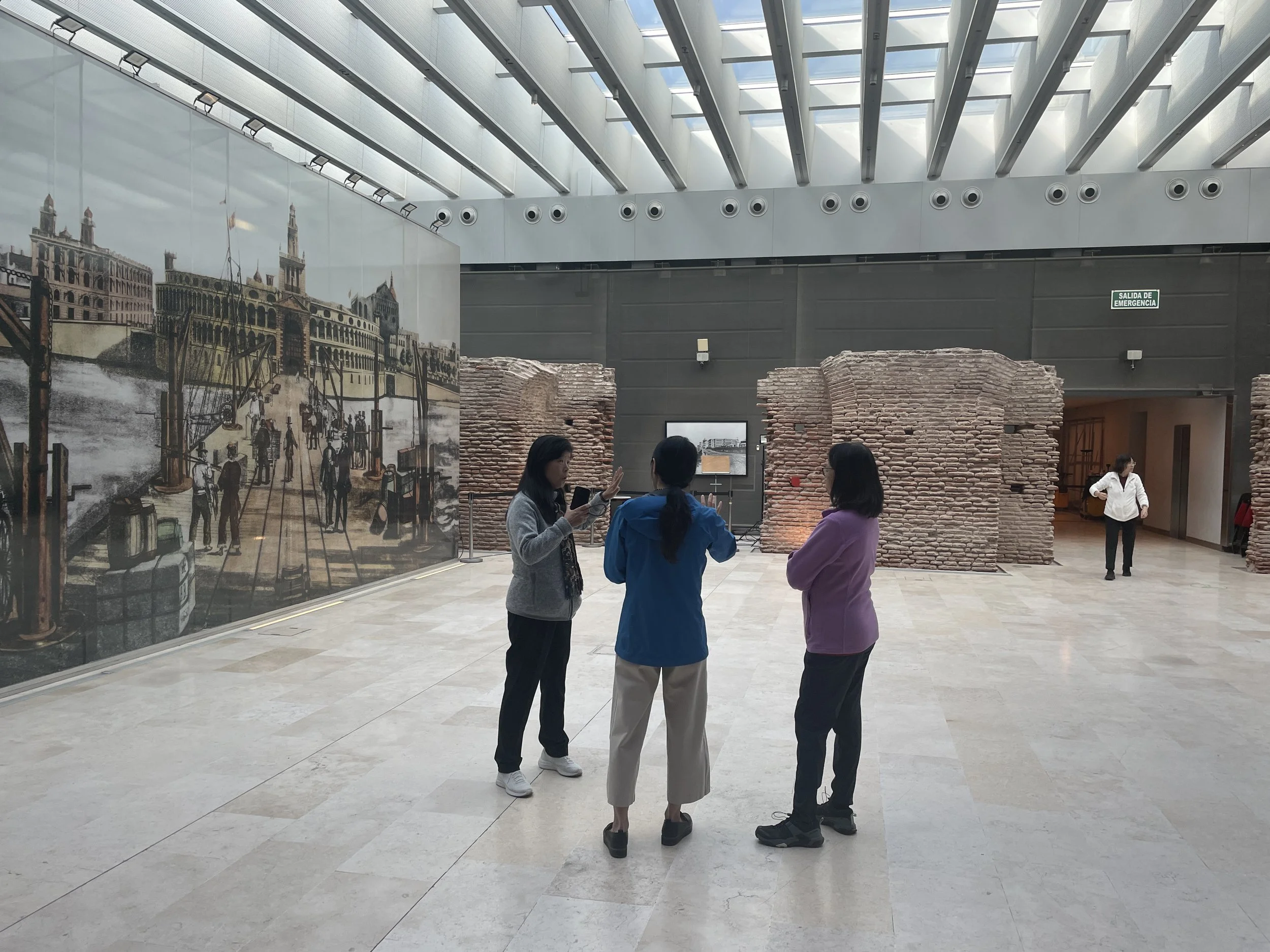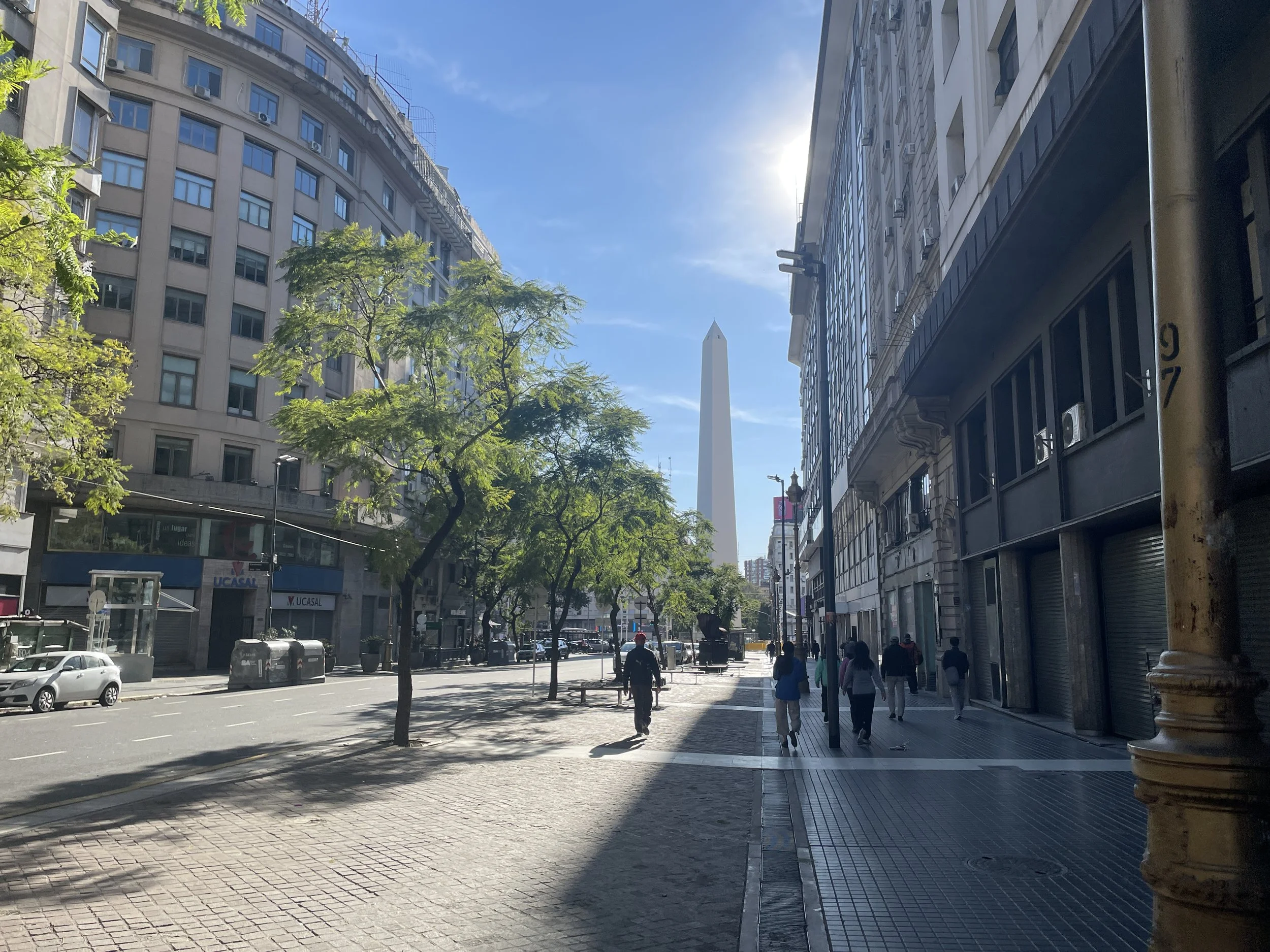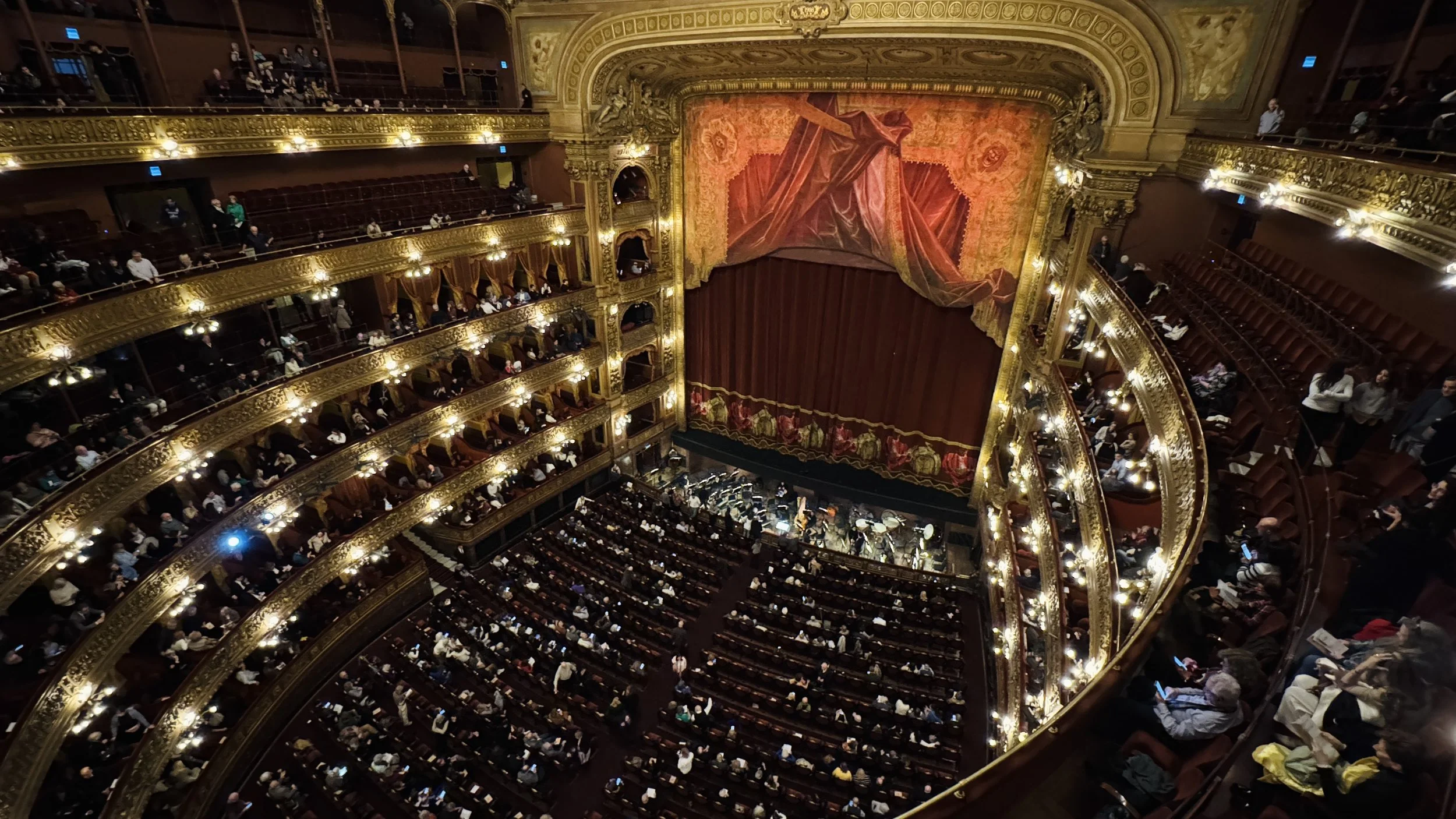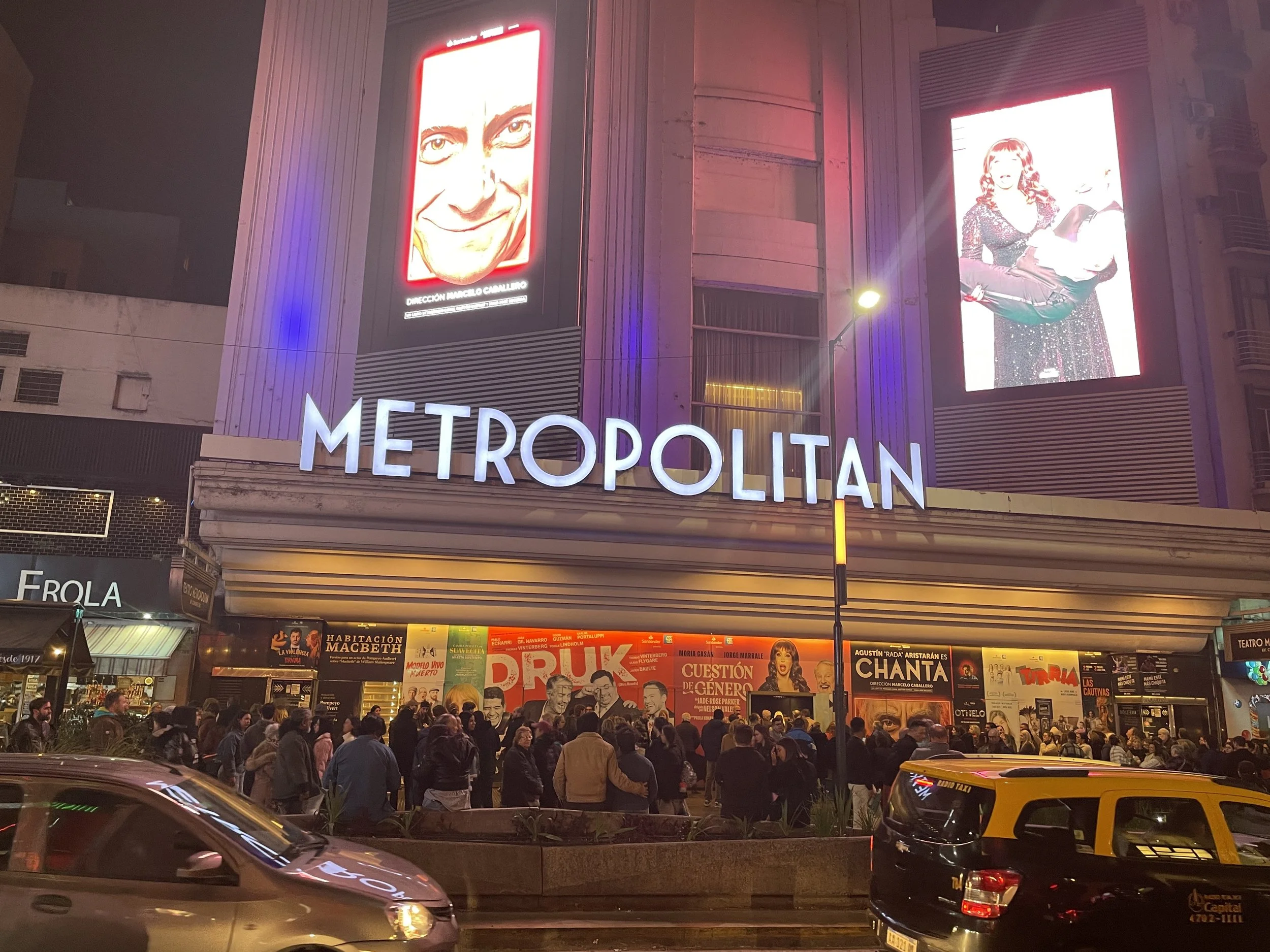La Boca, San Telmo Market, and Werther 拉博卡、圣特尔莫市场与《维尔特》
August 24, 2025
Today we visited the most colorful street in Buenos Aires — Caminito in La Boca. Unlike the quiet early morning scene yesterday, the area was now alive with tourists, open shops, and music in the air. Famous for its brightly painted houses, street tango performances, craft stalls, and lively cafés, Caminito exuded vibrant energy and unmistakable charm.
From there we took the bus to San Telmo for the weekly Sunday market. The long street was packed with vendors, booths, locals, and tourists, creating a vivid scene of bustling city life.
After arriving in Buenos Aires, we noticed many locals carrying a cup filled with tea leaves and a metal straw, often accompanied by a thermos of hot water. Some even carried special bags just for their mate set. On the ferry yesterday we learned this is mate tea, a beloved tradition throughout South America. At the market today, we were drawn to a booth selling mate cups and accessories, and we bought a set engraved with our names.
We also stepped into the San Telmo indoor market, which was much livelier than two days ago when we arrived too late. This time every café was packed, and finding seats for six was nearly impossible. Instead of sampling different stalls, we waited for a table at La Choripanería, a highly recommended spot inside the market, and shared a traditional Argentine platter that included black sausage.
After lunch we walked to the museum of the Casa Rosada (Pink House) to learn more about this significant national landmark. We then stopped by the Obelisco de Buenos Aires, the city’s most iconic monument built in 1936 to celebrate the 400th anniversary. Standing tall at the intersection of Avenida 9 de Julio and Avenida Corrientes, it made the perfect backdrop for a group photo before we continued on to the Teatro Colón.
In the evening, we attended the opera Werther at the Teatro Colón, one of the world’s great opera houses. Since all the seats were sold out, we managed to get standing tickets, which still gave us the chance to enjoy the performance in this magnificent venue. Massenet’s Werther, based on Goethe’s The Sorrows of Young Werther, tells the tragic story of a poet destroyed by unrequited love. The world-class performance, combined with the theater’s remarkable acoustics, made it truly unforgettable. Although the opera ran for more than three hours, we decided to leave after the second intermission.
We ended the day walking through the lively theater district and had dinner at Pizzería Güerrín, the most famous pizza place in the city. The thick, cheesy pizza was heavy, and even the classic Buenos Aires twist of pairing it with a slice of chickpea flatbread (fainá) wasn’t to our taste. We didn’t finish and took the leftovers home, all agreeing that this would be our last pizza stop of the trip.
拉博卡、圣特尔莫市场与《维尔特》
二零二五年八月二十四日
今天一早我们坐公交车来到了布宜诺斯艾利斯最色彩斑斓的街道——拉博卡 (La Boca) 的 卡米尼托 (Caminito)。这里以五颜六色的房屋、街头探戈表演、手工艺摊位和热闹的小餐馆而闻名,充满活力与独特魅力。我们去的早,游客还不算太多。
随后我们乘公交来到 圣特尔莫 (San Telmo),赶上了每周一次的周日集市。整条街道被摊贩,本地人和游客挤得水泄不通,热闹非凡。
自从抵达布宜诺斯艾利斯,我们就常看到当地人手里端着一个杯子,里面是茶叶和金属吸管,另外还带着热水瓶,有的甚至配着专门的茶具袋。昨天在渡轮上我们才知道,这是南美盛行的 马黛茶 (Mate)。今天在市场上被一个售卖茶具的摊位吸引,我买下了一套马黛茶具,商家当场在茶杯上刻上我的姓氏。
我们还走进了圣特尔莫室内市场。两天前晚上来时很冷清,大部分已关门,而今天却人声鼎沸,走路都必须人推人。市场里的小餐馆几乎都客满,六个人想找座位极为困难。于是我们放弃了逐个小摊品尝的想法,选择在一家口碑很好的小餐馆 La Choripanería 等位。短暂等待后终于入座,我们点了几份餐馆的特色菜包括一份传统的阿根廷拼盘,其中有黑血肠。
午餐后,我们步行前往 玫瑰宫 (Casa Rosada) 博物馆,了解这座布宜诺斯艾利斯最具代表性的地标。随后来到 布宜诺斯艾利斯方尖碑 (Obelisco de Buenos Aires)。这座纪念碑建于 1936 年,为庆祝建城 400 周年而建。我们在此拍下合影后,继续走向 科隆剧院 (Teatro Colón)。
晚上,我们在科隆剧院观看歌剧 《维特》(Werther)。来阿根廷前我们就上网买票,由于座位全部售罄,我们买了站票,有机会在这座世界一流的歌剧院中欣赏演出。歌剧《维特》改编自歌德的小说《少年维特之烦恼》,讲述了一位诗人因单恋而走向毁灭的悲剧。虽然听不懂,但世界级的表演与剧院无与伦比的音响效果相得益彰,使这次体验难以忘怀。
一天的行程在热闹的剧院区画下句点。我们来到布宜诺斯艾利斯最著名的披萨店 Pizzería Güerrín 用餐。厚重多芝士的披萨相当油腻,即便搭配上当地经典的 鹰嘴豆饼 (fainá) 却不合我们的口味。没吃完的部分我们打包带走,并一致决定这将是此行最后一次尝试披萨。



